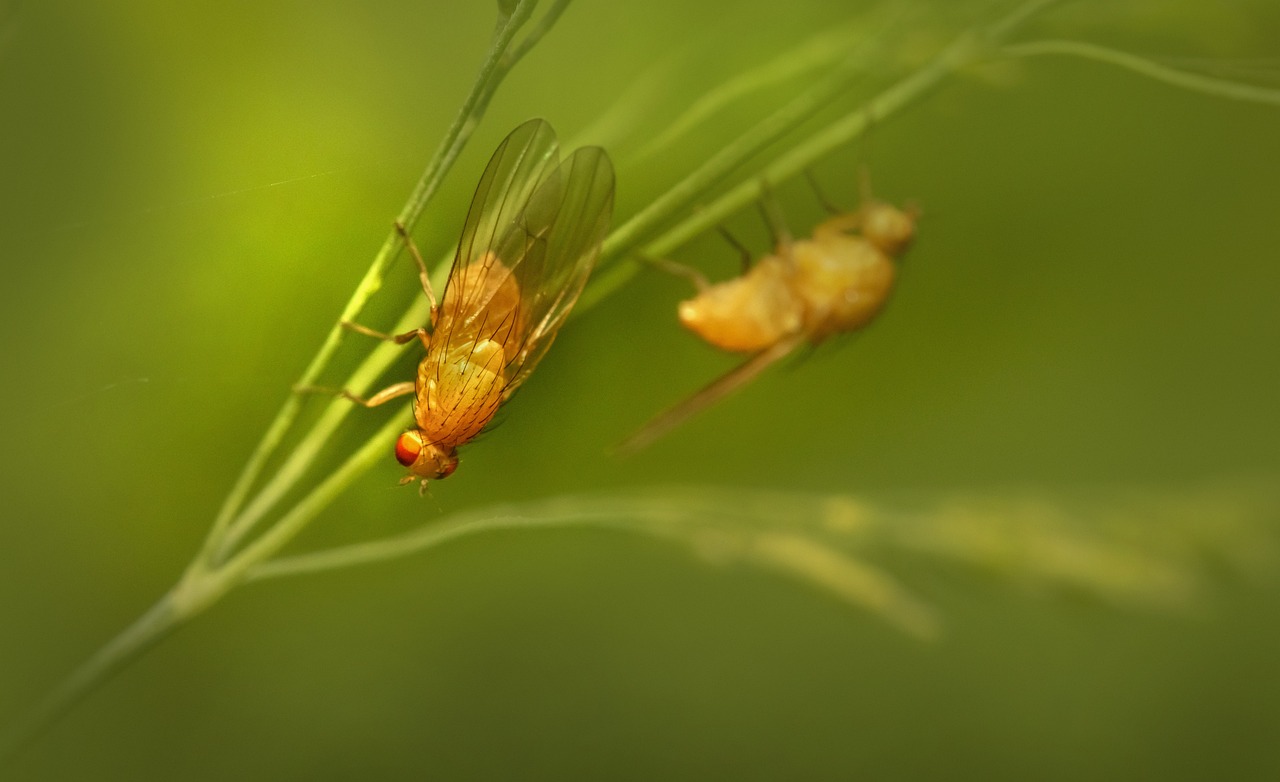The Lauxaniid Fly (Tricholauxania praeusta) is a species within the family Lauxaniidae, a group of small to medium-sized flies that are often found in various habitats. Here’s an overview of Tricholauxania praeusta:
Appearance:
- Size: These flies are small, typically measuring between 4 to 7 millimeters in length.
- Coloration: They generally have a shiny, black or dark brown body. The wings are clear or slightly tinged, with characteristic venation patterns that help in identifying the species.
- Antennae: The antennae are relatively short, with a distinctive bristle (arista) on the third segment.
Habitat:
- Preferred Habitats: Tricholauxania praeusta is commonly found in wooded areas, meadows, and gardens. They are often seen resting on leaves and flowers.
- Geographic Range: This species is widespread in Europe and parts of Asia. It thrives in temperate climates and is often observed during the warmer months.
Behavior:
- Feeding: Adults feed on nectar, pollen, and honeydew, making them occasional pollinators. They also feed on decaying organic matter, which contributes to nutrient recycling in ecosystems.
- Activity: These flies are diurnal and are most active during the day, especially in sunny conditions. They can often be seen flying in short, erratic patterns or resting on vegetation.
- Flight: The flight of Tricholauxania praeusta is quick and agile, allowing them to navigate through dense vegetation efficiently.
Life Cycle:
- Eggs: Females lay eggs on decaying plant material, leaf litter, or other organic substrates.
- Larvae: The larvae (maggots) develop in decaying plant matter, where they feed on microorganisms and decomposing organic material. This stage is crucial for nutrient cycling in the ecosystem.
- Pupae: After the larval stage, they pupate in the soil or within the decaying material.
- Adults: Adults emerge from pupae ready to mate and continue the life cycle. The complete development from egg to adult can vary depending on environmental conditions.
Ecological Role:
- Pollination: While not primary pollinators, adults contribute to pollination by feeding on nectar and pollen.
- Decomposition: Larvae play an important role in breaking down and recycling decaying organic matter, contributing to soil health and nutrient availability.
Conservation Status:
- Population: Tricholauxania praeusta is not considered threatened and is relatively common in suitable habitats.
- Threats: Habitat destruction and pollution can impact local populations, but this species is generally adaptable to a range of environments.
Interesting Facts:
- Family Characteristics: Lauxaniidae flies are known for their brightly colored eyes and often have distinctive wing patterns or coloration that aids in species identification.
- Larval Habits: The larvae’s role in decomposing organic material makes them an important part of the detritus food web, helping to maintain ecosystem health.
In summary, the Lauxaniid Fly (Tricholauxania praeusta) is a small but ecologically significant species. Its contributions to pollination and decomposition highlight its role in maintaining healthy ecosystems. Conservation of its natural habitats ensures the continued ecological functions these flies perform.
Visited 255 times, 9 visit(s) today
Views: 442
Advertisements
Subscribe to the newsletter:
